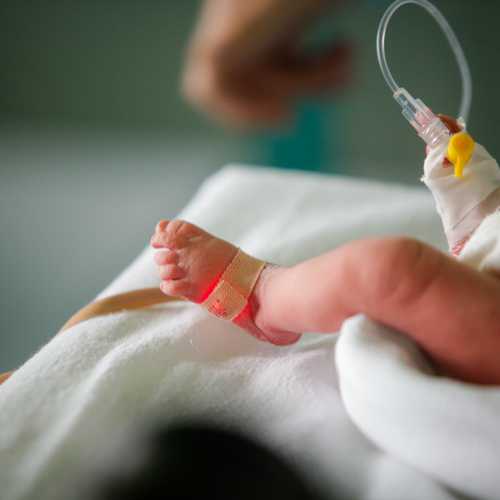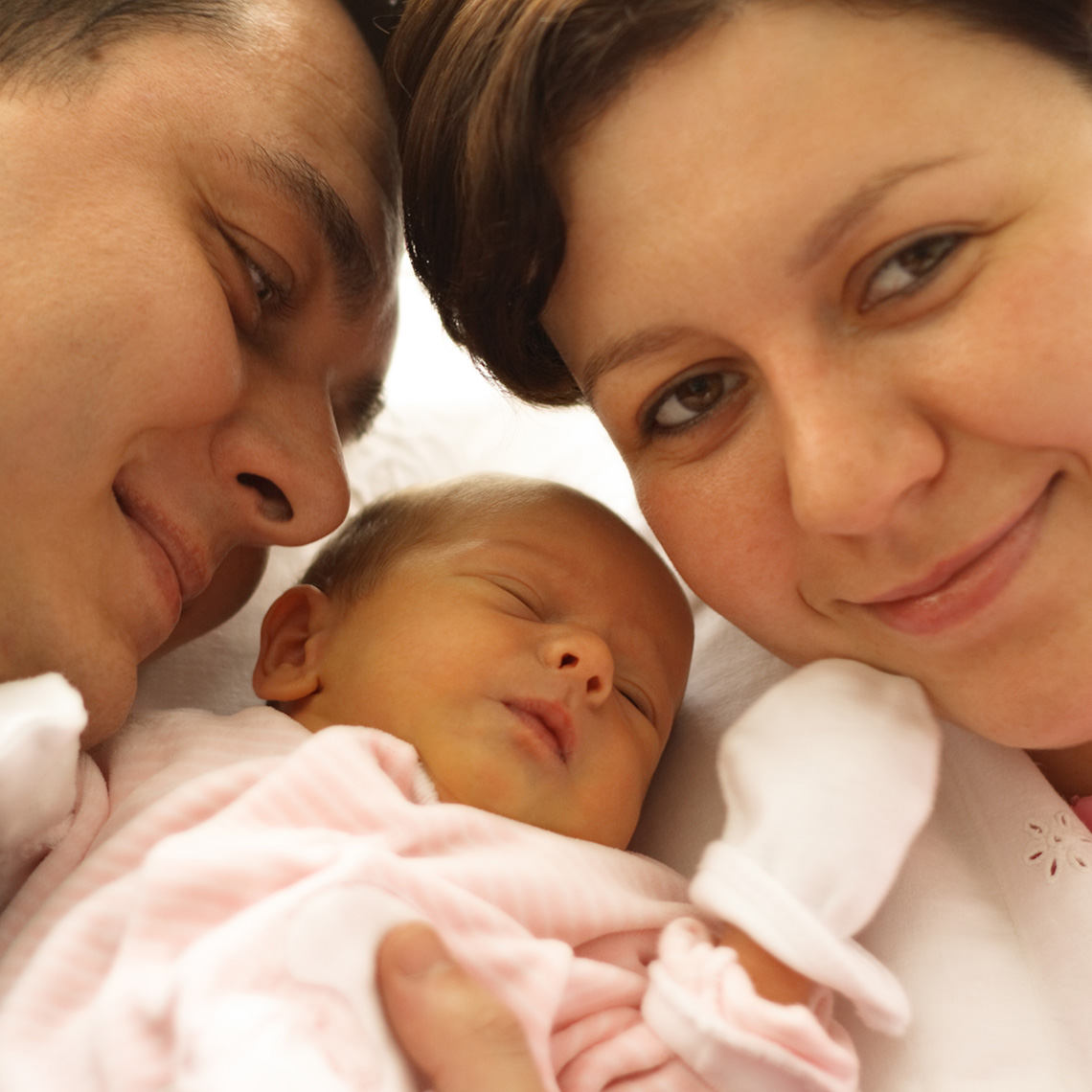Printer-friendly version of this consent form and the signature page
View
Guideline
OB Guidelines Appendix F: Delivery Following a Previous Cesarean Delivery
If you have had one baby by cesarean delivery, you may have some questions about what happens in the next pregnancy. First, you must discuss the situation with your doctor or midwife. You will have to plan for another cesarean, or to try for a trial of labor and a vaginal delivery. If you want to try for a vaginal delivery, the following explains the risks and benefits.
Is a Trial of Labor Right for you?
- During your previous cesarean(s), a cut was made in your belly and uterus (womb). If the cut was in the lower part of your uterus—and sideways—then it is usually strong. The risk of the scar tearing during labor is low.
- If you had a low, sideways cut, then you can safely attempt labor and a vaginal delivery. If you have had more than one cesarean, you can consider vaginal delivery, but the risk of rupture of the scar during labor goes up with each previous cesarean.
- If your cesarean cut was in the lower part of your uterus—but up and down—then the risk of your scar tearing is higher than if it was sideways.
- If your cesarean cut was in the upper part of your uterus and up and down (a classical cesarean delivery), then a vaginal birth is not recommended.
- Your doctor or midwife will need to know the type of cut you had in your previous cesarean(s). If your records are not available, the two of you will have to talk and decide if a trial of labor is right for you without having the information about your previous cesarean(s).
What Else is Needed for a Trial of Labor?
- Your pelvis should be judged adequate.
- You should have no other uterine scars.
- An obstetrician and other medical team members must be immediately available if you need an emergency cesarean.
How Successful is a Trial of Labor?
- From 60 to 80 percent of women who try labor give birth vaginally. Even after two cesareans, the success rate is relatively high.
- Women with bigger babies have a lower success rate. So do women whose previous cesarean was done because her labor slowed or stopped.
What are the Benefits and Risks of a Vaginal Birth?
- The mother usually has a faster recovery time, shorter hospital stay, and less discomfort. You have less chance of blood transfusion and postpartum infection. You avoid the risks of surgery (cesarean). Vaginal birth also lowers your baby’s risk of breathing difficulty in the first few hours of life.
- If your trial of labor is not successful, you will need an “unplanned” cesarean. An unplanned cesarean has more risk for you and your baby than a planned cesarean. This includes a higher chance of infection, blood transfusion, and a uterine tear.
- After a previous cesarean, a uterine rupture (tear) can occur during a future pregnancy or labor. If you have a low, sideways cut, the risk is less than one percent. If your uterus does tear, you will need an emergency cesarean. Your baby may be injured or die from a uterine rupture. Occasionally, the uterus cannot be repaired and a hysterectomy (removal of the uterus) may be needed. Rarely, other organs such as the bladder or bowel may be injured from a uterine rupture or emergency cesarean.
- The risk for rupture of the scar also goes up if your labor is induced, especially if your cervix is not ready for labor.
- The safety of a vaginal birth (after cesarean) with twins, breech babies, or after more than one previous cesarean, is less well studied.
What are the Benefits and Risks of a Scheduled Repeat Cesarean Delivery?
- A repeat cesarean can be planned and the date chosen. You avoid any chance of a long labor. The risks of attempting vaginal delivery are avoided.
- If a repeat cesarean is planned more than seven days prior to your due date, then your baby has more risk for problems.
- The infection rate is higher in women who are delivered by cesarean than for women who have vaginal births.
- Blood loss is usually more with a cesarean than with a vaginal delivery. Approximately 12 in 1,000 of all women who have cesareans require blood transfusion.
- Injury to the urinary system occurs in less than 1 in 200 women. These problems are usually identified and fixed at the time of birth.
- Injury to the bowel (the intestines, colon, or rectum) is very rare, occurring in fewer than 1 in 1,000 cesareans. If an injury to the bowel occurs, it will usually be recognized and fixed at the time of birth.
- Occasionally, the placenta in a future pregnancy can implant over the old scar. This increases the risk of bleeding and premature delivery in that pregnancy. The chance of the placenta implanting in the wrong place increases with each cesarean.
- Having one baby delivered by cesarean increases the chance of a cesarean for your next pregnancy. Each cesarean increases the risk of scarring and may increase the difficulty of the next cesarean surgery. There is also an increased risk for rupture of the uterus in future pregnancies if labor is tried.
- Rarely, infertility may result from internal scar tissue.
- Rarely, a hysterectomy (removal of the uterus) can be required.
Who Should Not Try Labor and Vaginal Delivery?
Trying labor and a vaginal delivery following a previous cesarean is not recommended when the risks are greater than the benefits.
- You’ve had a previous cesarean delivery with an up and down cut in the upper part of your uterus (a classical cesarean delivery).
- You’ve had some previous uterine surgery, including some myomectomies (fibroid removal).
- You’ve had more than two consecutive (back to back) cesareans and no prior or interval vaginal deliveries.
- You’ve had a prior uterine rupture or tear.
- Your pelvis too small.
- Medical or obstetrical problems prevent vaginal delivery.
<< Appendix E | Web Guideline Home Page | Appendix G >>
More CRICO Guidelines or Algorithms
CRICO decision support tools.
Neonatal Encephalopathy Guidelines
Guideline
At the behest of its membership, the Academic Medical Center Patient Safety Organization convened a Task Force to arrive at a set of consensus-based guidelines for the most effective use of therapeutic hypothermia in cases of suspected neonatal encephalopathy.


General Informed Consent Guidelines
Guideline
A document to assist institutions in reviewing policies, procedures and forms relative to obtaining and documenting informed consent.

Challenge: Take the OB Clinical Guidelines Test
Guideline
Take this test and see if you already follow these best practices from the Obstetrical Services of the CRICO-insured Institutions.

OB Guideline 15: Assessment and Monitoring in Labor and Delivery
Guideline
During prenatal care, the clinician and patient will discuss common events and procedures in labor, including methods of assessing fetal well-being.
